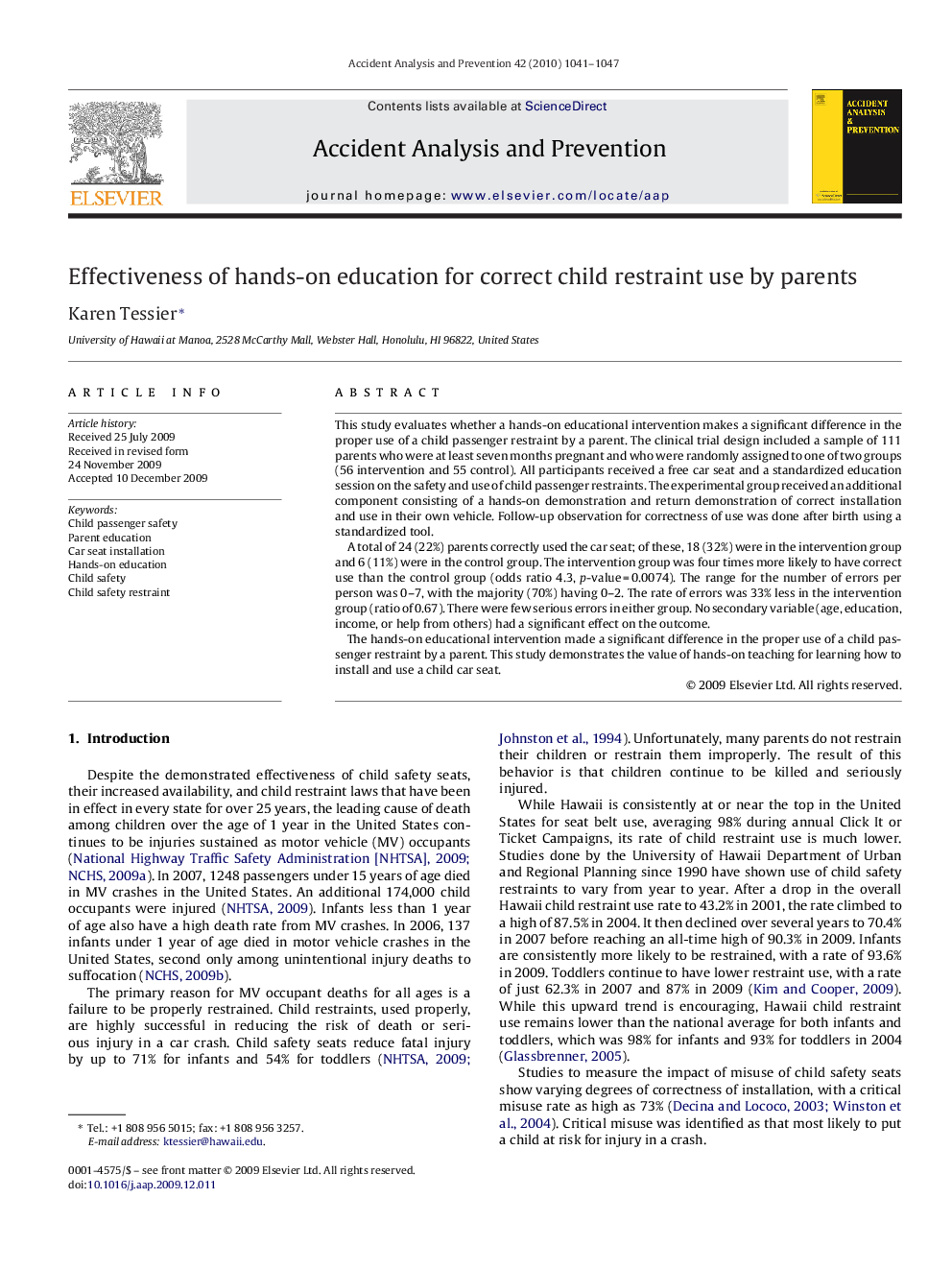| Article ID | Journal | Published Year | Pages | File Type |
|---|---|---|---|---|
| 573031 | Accident Analysis & Prevention | 2010 | 7 Pages |
This study evaluates whether a hands-on educational intervention makes a significant difference in the proper use of a child passenger restraint by a parent. The clinical trial design included a sample of 111 parents who were at least seven months pregnant and who were randomly assigned to one of two groups (56 intervention and 55 control). All participants received a free car seat and a standardized education session on the safety and use of child passenger restraints. The experimental group received an additional component consisting of a hands-on demonstration and return demonstration of correct installation and use in their own vehicle. Follow-up observation for correctness of use was done after birth using a standardized tool.A total of 24 (22%) parents correctly used the car seat; of these, 18 (32%) were in the intervention group and 6 (11%) were in the control group. The intervention group was four times more likely to have correct use than the control group (odds ratio 4.3, p-value = 0.0074). The range for the number of errors per person was 0–7, with the majority (70%) having 0–2. The rate of errors was 33% less in the intervention group (ratio of 0.67). There were few serious errors in either group. No secondary variable (age, education, income, or help from others) had a significant effect on the outcome.The hands-on educational intervention made a significant difference in the proper use of a child passenger restraint by a parent. This study demonstrates the value of hands-on teaching for learning how to install and use a child car seat.
